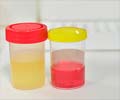A nationwide study by a UC San Diego Medical Center researcher has found that currently the number of patients likely to be detected with smaller tumors, in the earliest, most treatable
A UC San Diego Medical Center researcher has found in a nationwide study that the number of patients likely to be detected early-stage kidney cancer is more today than it was a decade ago. This means the cancer can be successfully treated in many cases.
The study led by Christopher J. Kane, M.D., chief of urology at UC San Diego Medical Center and the Moores UCSD Cancer Center, examined records of more than 200,000 kidney cancer patients described in the National Cancer Data Base, in order to determine the change in kidney cancer presentation in the last 12 years."The changes in kidney cancer presentation are visible nationally and quite dramatic. If you are diagnosed with kidney cancer today, it is more likely to be at the earliest 'stage I' level as opposed to more advanced 'stage II, III or IV' just a decade ago. The study also reveals a small but significantly higher survival rate for recently diagnosed kidney cancers. This is good news for the more than 50,000 kidney cancer patients who will be identified this year," said Kane.
The researchers assessed kidney cancer data between 1993 and 2004 and it was revealed that stage I kidney cancers increased from approximately 43 percent in 1993 to 57percent in 2004, but decreased in stages II-IV of the disease.
Also, the average size of the stage I tumors decreased from 4.1 cm in 1993 to 3.6 cm in 2003. Overall survival for all patients with kidney cancer increased 3.3 percent between 1993 and 2003. The 5-year survival rate for people with stage I kidney cancer is now 88 percent or better.
This downward trend was attributed to the more widespread use of medical imaging such as ultrasound, CT scans, and MRIs being conducted to evaluate other medical conditions.
Usually, the cancerous growths, which often have not yet caused symptoms, are found unexpectedly as a result of these imaging tests. These "incidentally detected" masses are often benign, smaller, and when confirmed to be kidney cancer to have better rates of survival.
Advertisement
Kidney cancer is considered a "silent killer" rarely causing signs or symptoms in its early stages. In the later stages, kidney cancer symptoms may include blood in the urine, back pain, weight loss, fatigue and intermittent fever.
Advertisement
The study will be published online for the latest edition of Cancer.
Source-ANI
RAS/L











